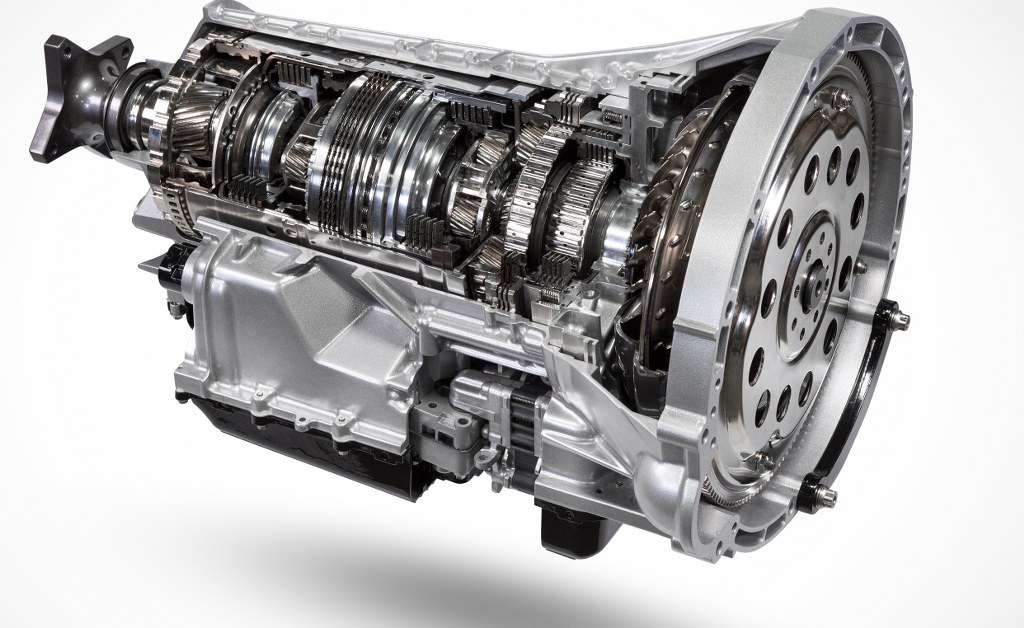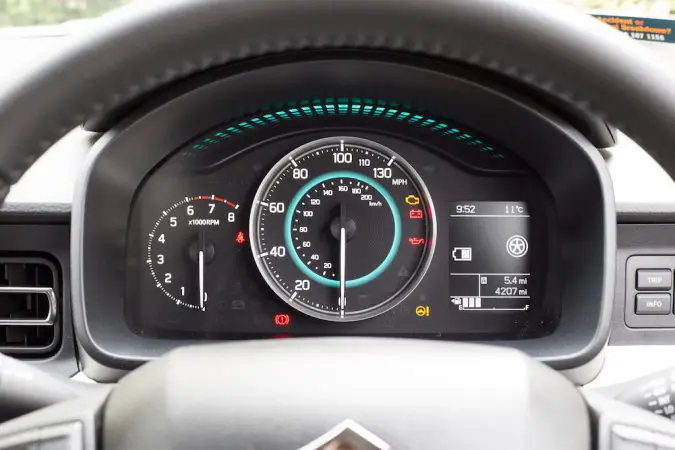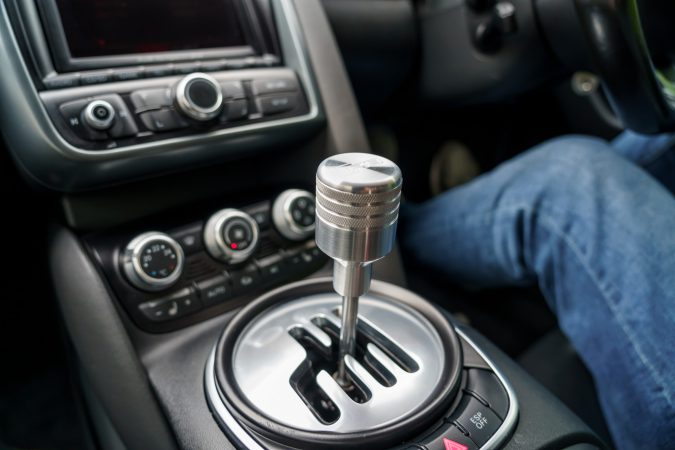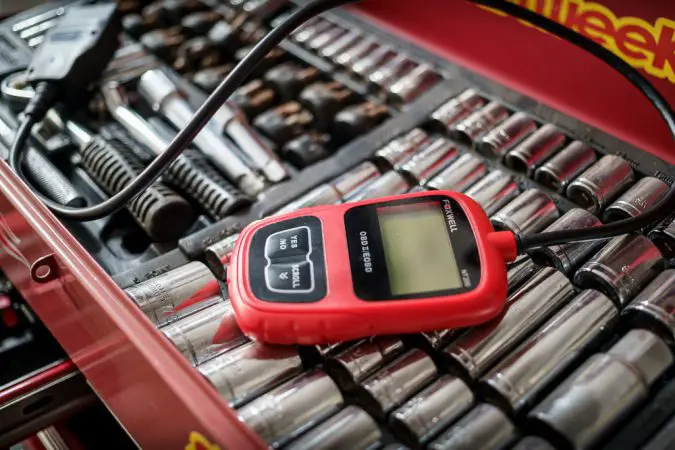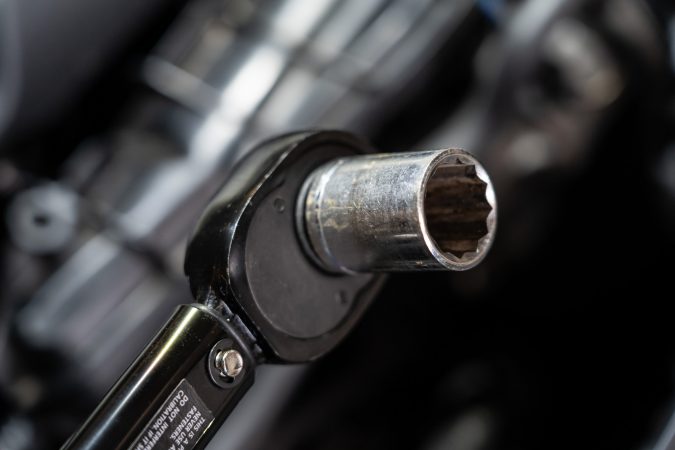Have you ever gone out for a drive, and felt something just a bit off with your car? Maybe a strange smell, some unpleasant sounds, or worrisome sluggishness while driving along? If you have, then you ought to phone up your mechanic, as your car might be suffering from transmission slipping. It might at first just feel like a minor inconvenience that’ll go away once you brush it off for a few miles.
However, transmission slipping could potentially end up snowballing into a major, and catastrophically expensive repair bill. Even worse, it’s quite easily a very preventable problem, if you pay close attention. So today, we’re going to take a look at transmission slipping – what are the symptoms, the causes, how to fix them, and how do we prevent them from happening again.
What should you look out for?
You might be driving along, noticing all this peculiar change in behaviour in your car, ones that you’ve never noticed before. Have you ever noticed that your car is feeling sluggish, or that it lurches around? What about strange smells and noises? “What’s going on?”, you think to yourself. Here, we’re going to list some of the things that you should be on the look-out for. This way, you can learn to know if your car is suffering from transmission slipping.
Burnt, or unusual smells
Smelling burnt-like aromas from your car is a clear sign of transmission slipping, caused by overheating. Worn out, or low levels of transmission fluid can cause that overheating within the transmission.
Leaking of fluids from underneath your car
A puddle of reddish – although not necessarily only red – liquids underneath your car indicates that the transmission fluid has leaked, which can cause transmission slipping, by wearing out the transmission itself.
High engine revs, or high idling
If your engine is revving higher than it was before, then it could be a sign of transmission slipping. This can be easily noticed by excess vibrations and noises compared to usual driving. For many cars, engine revs over 3,500RPM or above at 60mph in top gear is a clear symptom that something is wrong, and needs a check-up.
The ‘Check Engine’ light is on
The Check Engine light doesn’t just work to indicate potential faults with the engine, but also extends to other parts of the car, one of them being the transmission. You can easily plug-in an ODB scanner to discern if this is due to transmission slipping, or otherwise. This could help pin-point the exact fault, and parts that need servicing.
The car does not want to change gear
You can notice this quite simply by a delay in acceleration. Alternatively, you can see this clearly when the engine revs build up, and continually stay at the redline. This is due to the transmission not wanting to change up to another gear – another sign of transmission slipping.
The car changes gears, but very slowly
The car will change gears, but there is a very long wait between changing from one gear to the next. You can feel this as the car lurches forwards and back, as it waits for the gears to change. Pay attention to the tone and revs of your engine, when it goes from one gear to the next.
The car skips, or misses gears
This time, the car will instead miss one or several gears as its shifting along. You can feel this while accelerating or decelerating, and notice the abrupt changes in pitch of the engine, the engine revs, and car’s speed.
Harsh or unpleasant response when changing gears
If you hear a crunching, or grinding sound while changing gears, then this is another symptom pointing towards transmission slipping. Other odd noises also indicate potential faults within the transmission.
How does a car’s transmission work?
If you have anyone or multiple of the aforementioned symptoms above, then your car is suffering from the acute illness we call, transmission slipping. But before we can understand more of what it is, we should also take some time to understand more of how a car’s transmission works, from automatics to manuals, and the many bits and pieces that go in between.
As the name suggests, a transmission works to transmit kinetic energy from a car’s engine, to the wheels. It forms part of the car’s drivetrain. It is connected by its input to the engine through the crankshaft, and with a flywheel or clutch. On the output side, the transmission is connected to the driveshaft, and then to one or more differentials.
A car’s transmission works by regulating the energy generated by an internal combustion engine. It turns with the engine’s high rotational speeds, and then matches it to drive the wheels accordingly. This will also depend on the speed and throttle input.
Thus, the transmission will take the input and regulate the energy to ensure that a car can accelerate properly, with appropriate amounts of torque. There are many different types of transmissions used in automobiles. But for most road-going cars, there are 3 types that you should know.
Manual Transmission
They require that the driver manually engages the transmission through its gearing process. This involves depressing a clutch pedal, and then moving the gear-lever to select the right gears. Manual transmissions are often simpler in construction, and thus could be easier and simpler to maintain.
Automatic Transmissions
They work by automatically changing gears according to the input received, depending on the speed and throttle input. Working in tandem with other parts of the car, they can thus change gears with ease. It requires the driver only to engage the direction of travel (Drive, Reverse), or to disengage it (Park/Neutral). Otherwise, the selection of gears will happen automatically.
CVT
Otherwise known as ‘continuously variable transmission‘, a CVT functions mostly like a regular automatic transmissions. However, CVTs do not use gears, and instead rely on a system of pulleys and belts, and it modifies its ‘gear’ ratios accordingly. This allows them to theoretically have an infinite number of gear ratios. They are generally smoother and more fuel-efficient, but also require greater upkeep.
What is causing your car to face transmission slipping?
So, now that we’ve understood how a transmission works, we can identity the key causes for transmission slipping. This phenomenon can be an early warning sign that your car’s transmission is failing. So, let’s take a look at why transmission slipping happens, and later we can determine how we could fix these issues respectively.
Low, burnt transmission fluids
Just like every mechanical component, the transmission has fluids to make sure that every moving part remains lubricated and cooled. As with engine oil, transmission fluids are important to making sure the transmission works well. Poor maintenance could very easily be the primary cause for transmission slipping. This is due to the other mechanical parts in the transmission wearing out faster than it should.
Transmission fluids should never be low, as transmission cases are fully enclosed systems. A low fluid level would result in decreased hydraulic pressure for the transmission to function properly, which also means that there’s less fluid to cool it. If you notice leaking from under your car, then there could be a crack in the transmission case, cooling lines, or a worn out seal or gasket.
Transmission fluids will eventually wear out or burn, if not changed or serviced in a long time. This is evident by a burning smell. Mechanics often describe fresh transmission fluid to have a sweet aroma. When transmission fluids are burnt, they have less thermal efficiency to cool the moving parts within the transmission. Overheating (as warned by the “AT oil temp” light in a Subaru) will eventually lead to other mechanical problems, such as transmission slipping.
Defective solenoid
The solenoid is an electro-hydraulic valve that controls the flow of transmission fluids. They open and close according to input received from the car’s engine, or transmission control unit – essentially the car’s computer, or electronic brain. As such, the solenoid is just as important as the transmission fluid, in making sure the transmission is able to function in a well-maintained environment.
The regulation in the flow of transmission fluids is crucial to ensure that the transmission is able to function properly, while also preventing issues such as overheating. So, the solenoid must disperse the right amount of transmission fluids at the right time, and failure could cause faults like your transmission slipping.
The ‘Check Engine’ light can show solenoid defects, and you can further diagnose this using an OBD scanner. It might be caused by a defective solenoid, or potentially an electric or electronic issue. The latter would result in the solenoid not being able to receive the right input from the car’s computer. Thus, an otherwise functioning solenoid could not work properly.
Worn out transmission bands
Transmission bands are responsible for connecting the gearing together for automatic transmissions. They work in unison with the clutch plates in selecting the right gears, and at the right time. Transmission bands can become worn out after long use, especially if the transmission fluids are not being serviced regularly.
Worn out clutch
Clutches are used for both automatic, and manual transmissions. In essence, it functions to transfer the rotational energy from the crankshaft and flywheel, onwards to the transmission. Clutches can wear out after a period of time, thus causing issues such as transmission slipping.
Worn out gears
Gears are important to work within a car’s transmission, although they are still not immune from regular wear and tear. This is despite them being designed to last for a long time. Worn, or frayed gears can easily cause transmission slipping.
Worn out torque converter
A torque converter works by converting the engine’s power into usable torque that the transmission can then regulate and control. Torque converters are also subject to wear and tear, or become damaged due to improper flow of transmission fluid.
Manual transmissions, despite their simplicity, can also be prone to suffering from transmission slipping. As they require you to engage with the transmission yourself, there are some ways you can straight away notice problems. So, here are a couple of additional tell-tale symptoms of transmission slipping for cars with manual gearboxes, and their respective causes to look out for:
Gears grinding while shifting
If you hear grinding sounds while changing gears in a manual car, this could indicate that either the clutch is not engaging or disengaging properly. Alternatively, the shift synchroniser rings can wear out or be damaged, or it could be an alignment issue with the shifter itself.
Clutch pedal grabbing too high, or too low
There’s a lot that one can sense from the feeling of a clutch pedal, including transmission slipping. If the grab point of the clutch pedal is too low, it might be the result of problems with the linkages or hydraulic system. If the grab point is too high, it could be due to faulty adjustment, or a worn clutch disc and pressure plate.
Should you keep on driving a car that is suffering from transmission slipping?
In a word, no. Although some of the symptoms of transmission slipping seem like small problems that’ll magically go away, it’s actually a very serious problem. The check engine lights, odd smells and noises, or the car itself driving poorly is only the tip of the iceberg for potential faults down the line. It is hazardous to both you, and the car. The latter would exacerbate the cost and complexity of fixing it.
Transmission fluids leaking from your car would cause havoc if it happens to drip onto other moving parts. Moreover, those fluids leaking on top of a hot surface could cause a fire. That’s not to mention the damage of leaving the transmission and its components to keep running hot, causing greater wear and tear. It’s also a public hazard to leave a trail of slippery fluids on the road, as you drive along.
Driving with transmission slipping is a hazard for you, other road users, and the car
The inability to change gears properly or smoothly will further increase the risk of you getting involved in a nasty accident. This is owed due to the growing unpredictability of what the car will do next while faced with transmission slipping. It could leave you driving slower than the traffic around you. These abnormal behaviours mean that you have little control of the car.
In essence, if you’re feeling that your car is undergoing issues as the symptoms we described above, then you should not keep on driving. If you’re already on the road, then consider pulling over safely, and call for a tow-truck or road-side assistance to diagnose your car. Driving with your transmission slipping will not only cause more damage to the transmission, but is dangerous to you and other road users. We cannot stress enough the importance of keeping your car well-cared for before driving.
How do you fix transmission slipping?
Let’s look back at the causes of transmission slipping, and we can see that this problem can be solved either with replacing the transmission fluid or replacing worn out parts. The easiest problem to solve would be getting a readjustment or re-alignment done, such as the shifter or the clutch pedal. Some of this can be done yourself, but we recommend a visit to a qualified technician.
Replacing, and keeping your transmission fluids topped-up
Poor transmission fluids can attribute most of the core causes of transmission slipping. For example, the premature wearing out of parts. Low or burnt out transmission fluids will affect the rest of the transmission’s moving parts, and maintaining this can prevent expensive repairs later on. Relative to other faults, transmission fluids are fairly cost-effective.
If the transmission fluid is running low, it might be due to a leak in the transmission case, or through the cooling lines, seals, or gaskets. Patch up these leaks, if possible, and to then have the transmission fluid flushed, and replaced fully. Similarly, if the transmission fluid is burnt out, it will need to be flushed and replaced as well. The simple act of keeping your transmission fluid in good shape could easily prevent transmission slipping from happening.
Replacing defective parts
Replacing defective, or worn out components can solve the other causes for transmission slipping. There are many mechanical components inside of a car’s transmission, and they are all subject to wear and tear. This may include the solenoid, transmission bands, clutch, gears, or torque converters. For manual transmissions, it may also include the shift synchroniser rings, linkages, or the hydraulic systems for interacting with the transmission.
Replacing these parts can be expensive, depending on the make and model of the car. We also have to look at how the transmission itself has been designed. As most of it is inaccessible from the outside, repairs would often require the entire transmission case to be removed from the car. Expect bills to run easily into four-digits, given also the labour and time required.
Modern cars such as hybrids have even more complexities. They have additional parts to work in tandem with a hybridised powertrain. Then, you have cars fitted with dual-clutch transmissions, and so on that require more parts. You should consult with a verified technician, or a specialist beforehand to get a better understanding of how much it’ll cost to fix, or replace components within your transmission.
How do you prevent transmission slipping from happening again?
The best way for you to prevent transmission slipping is simply to take better care of your transmission. Regular servicing and check-ups is a start. As we’ve learned so far, one of the biggest and most avoidable cause for transmission slipping is down to the state of the transmission fluid, and how it is able to maintain the condition of other mechanical components within the transmission.
Ensuring that the transmission fluid maintains its flow at an adequate volume, and retaining its thermal properties could very easily prevent the mechanical parts of the transmission from wearing out too early in its lifespan. Most car manufacturers would recommend changing transmission fluids every 30,000 to 60,000 miles. Following the manufacturer’s recommendations, always be sure to keep on top of your car’s servicing schedule.
Alternatively, you could be a bit more gentle when changing gears next time. This applies either if you’re driving a manual, or shifting gears manually with an automatic gearbox. Ensuring that you engage and disengage the right gears properly, could also help in preventing transmission slipping and other faults in the future. It’s worth noting as well, that CVT transmissions often have a shorter service interval, thus requiring more frequent maintenance.
Transmission Slipping: Need-to-Know Facts
- Transmission slipping is a significant issue that can occur in any car, particularly automatic transmission vehicles.
- A slipping transmission can start small and worsen over time, causing several problems that could result in the vehicle not being able to move.
- Transmission slipping could be due to several solvable reasons in automatic transmission vehicles, while in manual transmission vehicles, it’s almost always due to a worn-out clutch.
- Transmission slipping usually occurs when the engine revs, but there is no acceleration during driving, resulting in the power produced by the engine not getting to the wheels.
- Signs of a slipping transmission include high RPM, illuminated check engine light, burning smell, delays during acceleration, failure to engage reverse gear, and strange noises when shifting.
- Low-level or leaking transmission fluid, burnt transmission fluid, a worn-out clutch, and a faulty solenoid are the most common causes of transmission slipping.
- Low-level or leaking transmission fluid can potentially damage the transmission and requires immediate attention.
- Burnt transmission fluid turns black and smells like burnt toast, indicating overheating, which requires a fluid change and inspection for damage.
- A worn-out clutch needs replacement after extensive use, and a faulty solenoid causes irregular fluid flow in the transmission system.
Conclusion
Transmissions are designed to last a very long time, often up to the lifetime of the car itself. However, they can also fail in a surprisingly short amount of time if not cared for properly. It depends on the specific make or model of your car, and the transmission that it uses. However, a lack of care or maintenance could easily doom your transmission to failure after just 100,000 miles of driving.
But with proper attention, we’ve heard stories of cars running 500,000, or even 1,000,000 miles without needing major work on their transmission. Transmission slipping can be an early warning sign that your car’s transmission is about to fail. As such, it shouldn’t be something you can shrug off easily. So, you should strongly consider having it checked as soon as the symptoms appear.
Something as easy as a quick flush and a bottle of transmission fluid could very easily help you save thousands of pounds on having to change expensive clutches and gears. It’s often the easiest of fixes and maintenance that would prevent major repairs from needing to be done. Hopefully, now that you’ve read this, you’d be more aware next time of transmission slipping – what to look out for, the causes, and how to fix them!

